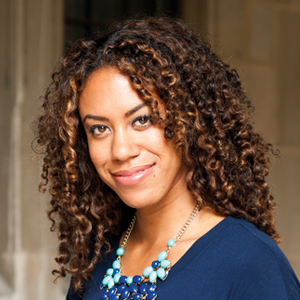Bringing the world to her classroom

Jessica Stovall had settled into her dream job teaching English at Oak Park and River Forest High School when one day she began writing on the whiteboard in her classroom: “Ms. Stovall is currently reading ….” Students started talking about the books they were reading, and soon an impromptu book club was born. “That’s when I realized I needed to continue to be a student myself,” says Stovall.
Stovall, who has a bachelor’s degree from the University of Wisconsin–Madison, enrolled in SPS’s Master of Arts in Literature program. She completed her master’s degree in 2013, writing a thesis on the motif of vertical height and its impact on African American characters. “I noticed that some black characters had trouble navigating vertical heights,” says Stovall. “In Native Son and Invisible Man one main character is trapped on a roof, and the other can be himself only when he is below the city. In those ‘white’ spaces, height symbolizes economic and social power.”
Recharged by her studies at Northwestern, Stovall brought her new insights into her high school classroom. With 3,300 students drawn from diverse communities, the suburban school near Chicago faces an achievement gap between black and white students; Stovall wanted to help close that gap. Her confidence buoyed from her graduate school experience, Stovall applied for and won a prestigious Fulbright Distinguished Award in Teaching grant. She used the award to travel to Wellington, New Zealand, in 2014, to study the achievement gap between the minority indigenous Maori people and New Zealanders with European roots.
“I quickly discovered that it wasn’t appropriate for an outsider to critique that,” says Stovall. “Instead I examined their best practices to see what I could bring back to my teaching.” What Stovall took home was the Maori word for extended family: whānau. “The Maori build classroom communities, gathering students in circles instead of rows,” says Stovall, who rearranged her classroom into circles, with surprising results.
“One class had a ton of conflict, but after we started doing circles, the atmosphere changed and I could teach my students in new ways.”
